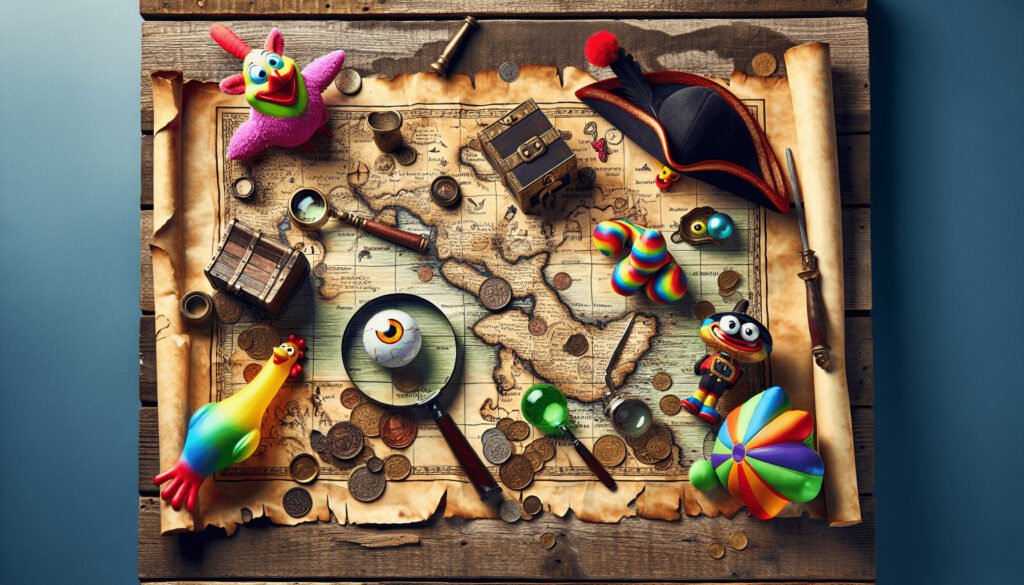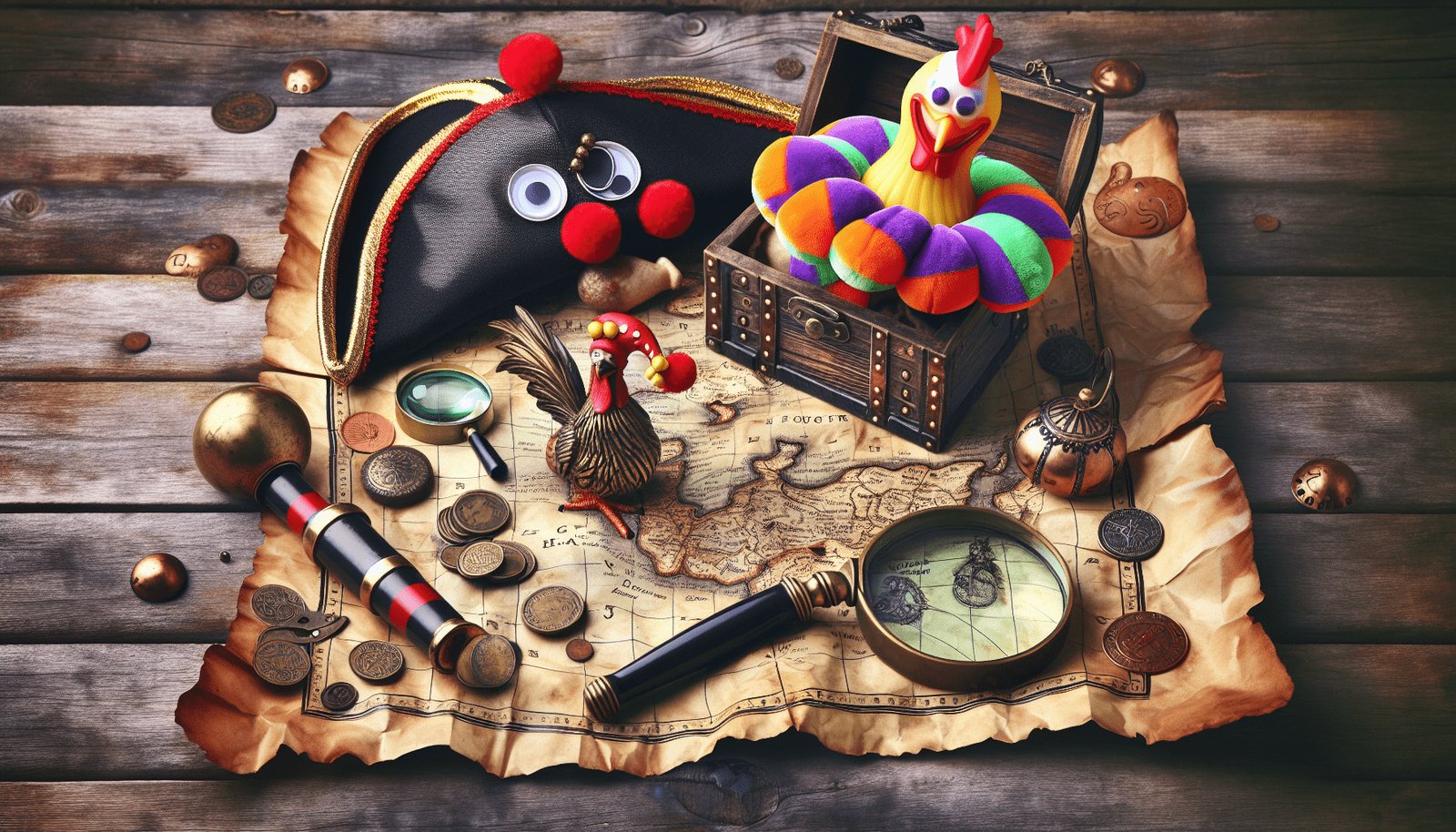Have you ever found yourself staring at a pirate treasure map, just a whisper away from becoming the next Pirate of the Caribbean, but with a nagging feeling that your map might be faker than a Kardashian’s…well, everything? If you’re like me and think authenticity checks should be quicker than Googling “Johnny Depp eye liner tips,” let’s embark on this pirate adventure together. Because, darling, I have no idea what I’m talking about, but I’m compelled to make you laugh along the way.

The Anatomy of a Treasure Map: A Breakdown That Will Make You Look Like an Expert (Temporarily)
In your hands, you might be clutching what looks like an ancient scroll straight out of a Spielberg movie. But is it the real deal? Let’s dissect that crumpled piece of paper and see what we find.
Paper Age: When Was This Thing Born?
First things first, check the paper. Old, authentic maps have aged gracefully like Meryl Streep, not George Hamilton. Authentic antique paper is much harder to fake than a spray tan because it tends to be either parchment (animal skin) or rag paper (cotton or linen fibers). If it feels like it came from a ream of printer paper, then, baby, you’ve probably been punked.
An easy DIY test? Light a tiny corner on fire. Parchment paper doesn’t burn as fast as regular paper. Just don’t burn down your house; I’m not paying for any damages.
The Ink Test: Pirates Loved Their Squid Juice
Authentic pirate maps were drawn using natural inks made from things like iron gall or cephalopod ink. I mean, they had to make use of those calamari somehow, right? Hold a magnifying glass over the ink—if it’s too uniform or jet black, you’re holding a reproduction. Real ink from the “Yo-ho-ho” days has varied texture and can look brownish or faded. And if you see Comic Sans, throw it away immediately.
Deciphering Pirate Codes: Yo-Ho-Huh?
Pirates loved their codes. If you break it faster than you can say “David Beckham,” it’s probably fake. Genuine codes are meant to be intricate, frustrating, and ultimately make you swear more than Gordon Ramsay on a bad day. Brush up on your cryptography or at least find a nerdy friend who graduated from MIT.
The Map’s Provenance: A Fancy Word that Means “Where Has This Thing Been”
Provenance is just a fancy term for the map’s backstory. Kind of like asking, “Hun, where have those lips been?” Authentic maps usually come with a solid history or chain of custody. Like, did it belong to the great-great-grandkid of Blackbeard, or was it discovered at a garage sale next to a Beanie Baby collection?
Chain of Custody: Sherlock Holmes Would Be Proud
Pirate maps often come with tales—who stole it from where and when, how it survived that dramatic shipwreck, and who found it in their attic while looking for Christmas ornaments. If the story sounds as plausible as my Tinder date’s excuses for canceling, then it probably is too good to be true.
Documentation: More Paperwork Than an IKEA Furniture Kit
Some real maps come with affidavits or certificates of authenticity. But keep in mind, faking documents in the age of Photoshop isn’t exactly rocket science. However, if the paperwork is more comprehensive than my tax filings, it’s worth a second look.
Hidden Clues Within the Map: Pirates Didn’t Just Draw X’s for Fun
Look for hidden patterns, unique references, or insider’s jokes that only a fellow pirate would understand. Pirates had a weird sense of humor and a penchant for riddles that make a standard crossword look like child’s play.
X Marks the Spot: But Which Spot?
Everyone knows “X marks the spot,” but if your map has more X’s than a Taylor Swift song, then it’s trying too hard. A genuine pirate map will have one significant X—less is more, darlings.
Cryptic Symbols: Bizarre or Beautiful?
Authentic maps are like tattoos; they have symbols that are unique and mean something important. From the ever-mysterious sea serpents to cryptic lines indicating hidden paths, real maps have symbols that hint at the dangerous journey ahead. If it looks like a toddler’s sketch, it’s probably fake and you should report it to your local preschool.
The Importance of Geography: Because Even Pirates Needed GPS
One thing to remember about authentic treasure maps: they were surprisingly dependable when it comes to geography. Pirates were criminals, not idiots. They knew their seven seas better than most people know their Instagram passwords.
Relationship to Real Locations: Pirates Were World Travelers
Compare the geography on your map with actual known locations. If there’s a Starbucks in the middle of “Uncharted Island,” then it’s a screaming fake. Or maybe it’s just your cue to put down the rum.
Nautical Charts: More Than Just Lines on Paper
Pirate maps often doubled as nautical charts with real bearings and coordinates. If your map has longitude and latitude that actually make sense, you might be holding something genuine. Or hey, maybe you just got lucky with a Google Maps printout.

The Smell Test: Trust Your Nose, Not Just Your Eyes
No, seriously, a smell test. Real pirate maps will have that musty, slightly decaying odor of old libraries or my ex-boyfriend’s vintage comic book collection. That’s centuries of history you’re inhaling there.
The Aromas of Authenticity
Sniff around, darling. A real map will smell organic, like it’s been around saltwater or buried in soil. If it smells like fresh ink or toner, chuck it out. There’s nothing worse than a recently churned out fake map with the authenticity of a fast-food burger.
Mold and Mildew: Pirates Didn’t Have Febreze
Real maps might also have the telltale signs of age, like mold or mildew spots, what I like to call the “pirate stench.” If you’re not sneezing from centuries-old dust, you’re probably holding a modern imitation that’s cleaner than my mother’s expectations of me.
Personal Anecdote: The Time I Almost Found Booty
So there I was, waltzing through an antique shop, feeling like I’m on ‘Antiques Roadshow.’ I found this dusty old map, complete with a secret code. I was convinced I had struck gold. Even called up my friends, “Guys, I’m like the brunette Indiana Jones!”
Long story short, after weeks of sleepless nights trying to crack the code (Netflix binging Pirates of the Caribbean sort of counts as research, right?), and a tearful confrontation with an actual historian, it turned out to be a very creative napkin doodle. Lesson learned: always double-check your pirate maps with someone more experienced than your friendly, neighborhood Starbucks barista.
Conclusion: Congratulations, Treasure Hunter! You’re Ready to Be Slightly Less Gullible
Now that you have the ultimate (albeit somewhat unreliable) guide to distinguishing real pirate treasure maps from crafty fakes, you’re pretty much an honorary pirate. Remember, while deciphering authenticity is a treasure hunt in itself, the real treasure is the friends we make along the way—just kidding, it’s obviously gold and jewels. Who needs friends when you have riches, right?
So go forth, intrepid explorer! Armed with your newfound skepticism and a decent sense of humor, you’re now more prepared than most to spot a real treasure map. Or at least, fool others into believing you can. Either way, enjoy the adventure. And if you actually find buried treasure, don’t forget to send me my cut. Avast, and happy hunting!
P.S. Always have a fire extinguisher nearby—burning bits of map can get out of hand faster than you saying, “I swear I’m not weird.”